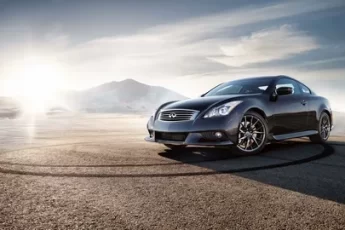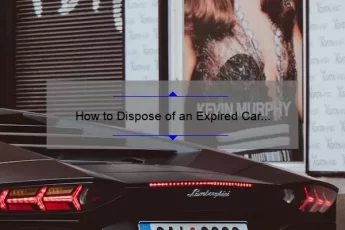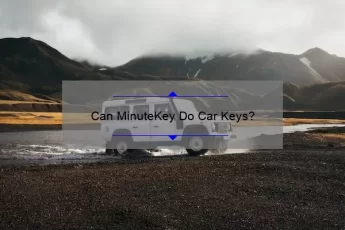You can put E85 in your stock car, but if you want to get the best performance, you need to make some changes. If your car is older, you will need to change the fuel system in order to make it work with E85. Older cars are more vulnerable to damage with E85 than they are with regular gasoline or diesel. That is because 85% ethanol is five to eight times as damaging as other fuels.
FFVs already have coated fuel lines
FFVs are equipped with fuel lines that are coated with a special chemical. This coating is designed to help prevent oxidation and corrosion of these lines. Because the fuel system contains a lot of metal, ethanol can cause additional problems. It is not advisable to leave metals such as aluminum, rubber, or magnesium exposed to ethanol. This is why FFVs have fuel tanks and fuel lines that are made of stainless steel.
These vehicles run on a mixture of gasoline and ethanol. A typical Flex Fuel Vehicle is the Ford F-150, which runs on E85 fuel. The fuel lines are nickel-coated on the inside diameter to protect the metal from corrosion. The fuel delivery modules have aluminum rotors.
Another advantage of FFVs is the reduction in bare metal parts in the fuel system. In addition, FFVs use engine oil that neutralizes the acidity of the fuel. They also use fuel pumps that have flame arrestors installed in the fill pipe. In addition, they use a wider range of pulse in fuel injection sensors, which allows them to inject up to 40 percent more liquid fuel.
Flex Fuel Vehicles are a great way to promote sustainability. They run on Ethanol, a renewable fuel derived from natural crops. However, Ethanol has a tendency to absorb ordinary dirt and dust and can damage vehicle engines. Additionally, many vehicle experts claim that FFVs have poor gas mileage. Whether they are correct or not, a FFV has many benefits, including a low carbon footprint.
Viton seals
A Viton(r) o-ring is a highly durable, flexible and heat-resistant o-ring that’s perfect for use in vehicles that run on ethanol-based fuel. It can withstand temperatures from -13 degrees Fahrenheit to 446 degrees Fahrenheit. While other materials, such as silicone, can fail in these conditions, Viton o-rings are able to withstand these temperatures without compromising their seal performance.
Viton seals are required on fuel pumps and other engine components that come in contact with fuel. This includes the head gasket, water pump, thermostat, and exhaust gasket. In addition, almost every o-ring in a vehicle is made from Viton, which means that it will not react with E85 in any way.
In the case of flex fuel vehicles, Viton(r) seals are necessary to avoid engine failure. These seals are made to withstand 85% alcohol in the fuel and have a long life expectancy. For example, the Viton(r) Type F elastomer used on flex-fuel vehicles is designed to withstand up to 10 years of ethanol.
If you want to add E85 to your stock vehicle, you can use a piggyback fuel system. This will allow you to run the new fuel at the right AFR. However, you’ll need to ensure that the pump and rubber seals are compatible with E85.
In addition to converting the fuel type, you’ll also need to add E85 to your vehicle’s ECM. This will enable you to modify the fuel-control settings to accommodate the higher fuel content. Changing the fuel type will also affect the timing, so it’s important to get an ECU flash if your car is running E85.
Fuel pumps
In order to use fuel pumps for e85 in stock cars, you need to install a fuel system with hermetic mil-spec connectors for the power, ground, and fuel-level sending unit signal. This way, you will ensure that the fuel pump and fuel system are working correctly. However, these connectors are not cheap and will require a specialized crimping tool.
Typically, E85 fuels contain a mixture of 50% to 85% ethanol and traditional gasoline. The exact blend will depend on the climate in your region and the time of year. A good blend will yield an octane rating of 105 or higher. This is usually sufficient for many racing applications and offers several benefits. The alcohol in E85 also allows the engine to tolerate higher cylinder pressure. It also provides better cooling for the engine.
Another advantage of E85 is the lower price. It costs less per gallon than premium gas, and it is a safer fuel. It is also a cleaner fuel, meaning that it won’t harm your engine. E85 can also improve the fuel economy of your car. However, you will have to re-calibrate your ECU for optimal performance.
Injectors are another vital part of an e85 fuel system. Not only must they be compatible with E85, but they should also have a 300-lph flow rate. Also, make sure you choose one with the appropriate size for your car. The size of the injectors will also depend on the fuel pump.
If you are converting your stock car to run on E85, you should choose a high-quality fuel pump with stainless-steel internals. These are more durable than the OE ones and are more likely to last. Some aftermarket fuel pumps are made with a brass sealing valve, which is subject to corrosion and can lead to poor sealing and loss of pressure at key-off.
Water content
There have been a number of studies examining the impact of E85 on vehicle emissions. Most studies have shown that the fuel produces less ammonia and other emissions than E10, but there are some differences. Cars with the lower-than-standard fuel use more water in the exhaust gas, and this can cause the emissions to be worse.
E85 is a blend of gasoline and ethanol. It is made by the process of distilling sugar. Unlike regular gasoline, ethanol is derived from renewable sources, including corn and sugar cane. Due to its various benefits, it has become one of the most popular fuels in recent years. NASCAR and the Indycar series both use race gasoline that is 15% ethanol.
E85 is blended to meet government volatility standards. The levels vary by location and season, but in the coldest parts of the country, the requirements are higher. The volatility level is measured by Reid Vapor Pressure, which is expressed in pounds per square inch. Higher values indicate higher volatility.
Some gas stations have started offering E85 fuel, though not everywhere carries it. For example, there is only one gas station in Utah that sells E85. For this reason, those who want to run their stock cars on E85 must plan their routes carefully and find a local speed shop that has the fuel on hand. Another challenge with E85 is its high water content. The fuel requires 15 percent gasoline to run, and it requires even more for winter conditions.
While there are some drawbacks to using E85 fuel, studies show that it can reduce PM emissions. Studies done with DISI engines found that the use of E85 reduced the emissions of wet and dry particles by seventy to ninety percent. A similar effect was seen for the dry PN emissions rate. E85 has also been associated with a shift to lower primary peak diameter.
Tuning out as race gas
There are several benefits of tuning out as race gas in stock cars. First, you’ll make more power. Using a higher octane fuel, like race gas, can increase your power output by a large amount. You’ll also experience less knocking. A race gas tune can give you up to 40 hp at the wheels. But you should know that using leaded fuel can damage your emissions cat and o2 sensor.
If you have a V8 in your car, you can use race gas. However, the stoich is low and can damage your engine. Using a high octane fuel will allow you to add more timing to your engine, which will increase its performance on the road course.
Sunoco has a wide selection of race fuels. Their octane rating ranges from 95 to 118. To find out which one will be best for your car, visit Sunoco’s website. The site also has a search tool that allows you to find a local Sunoco retailer. Having a dealer in your neighborhood will make it easier to get your gas.








